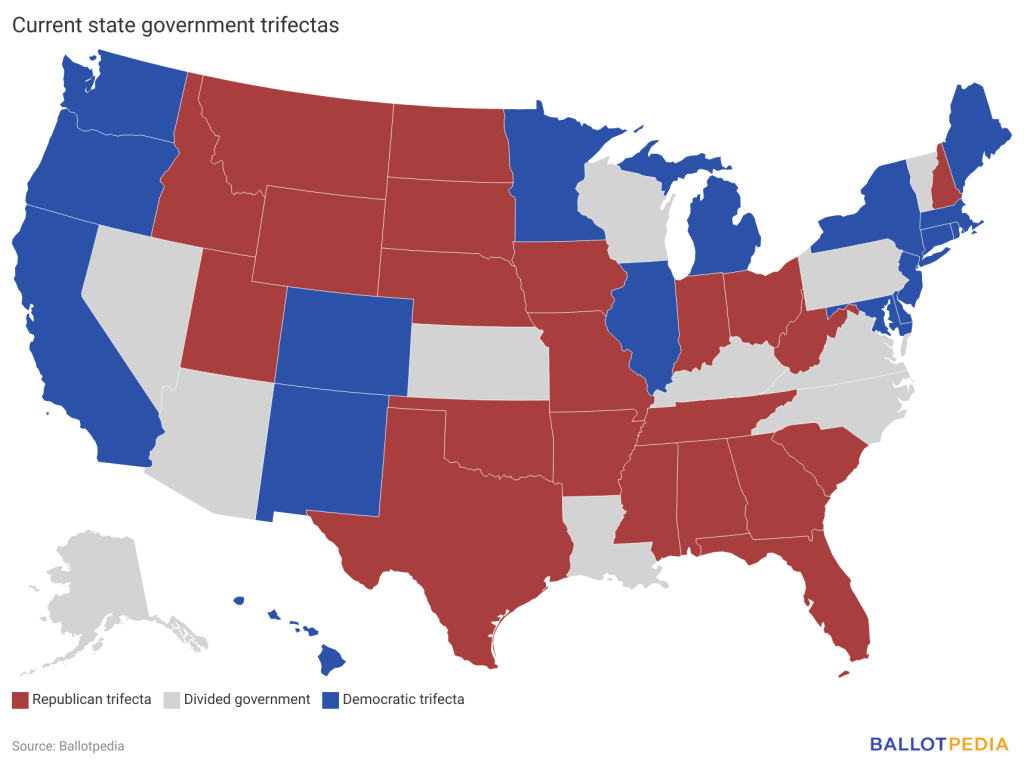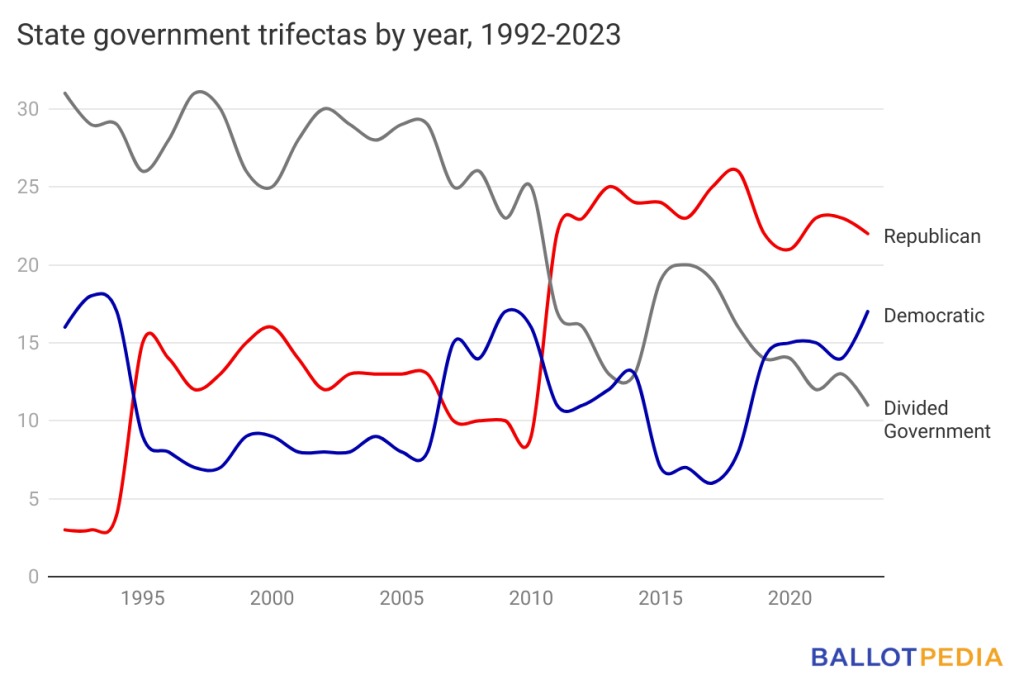There are 39 state government trifectas, more than twice as many as the 19 there were over 30 years ago in 1992. A state government trifecta is a term to describe a single-party government when one political party holds the governorship and majorities in both chambers of the state legislature.
While there are more total trifectas today than at any point in the last 30 years, neither major party is at its own individual high. There are 17 Democratic trifectas, one below the peak of 18 Democratic trifectas in 1993. And there are 22 Republican trifectas, four below the peak of 26 Republican trifectas in 2018.

The number of trifectas hovered between 19 and 27 in the 1990s and 2000s, hitting 19 in 1992 and 1997, and hitting 27 in 2009.
Trifecta coverage across the United States crossed 60% in 2013 and has not dropped below that point since. That year, lawmakers sworn in after the midterm elections during President Barack Obama’s (D) first term increased the number of Republican trifectas from nine to 22 and cut the number of Democratic trifectas from 16 to 11.

Five states have maintained a trifecta of the same party since before the turn of the millennium: Utah (1985), Idaho (1995), North Dakota (1995), South Dakota (1995), and Nebraska (1999). All of those states are Republican trifectas. Delaware, the state with the longest current Democratic trifecta, became one in 2009.
Additional reading:


